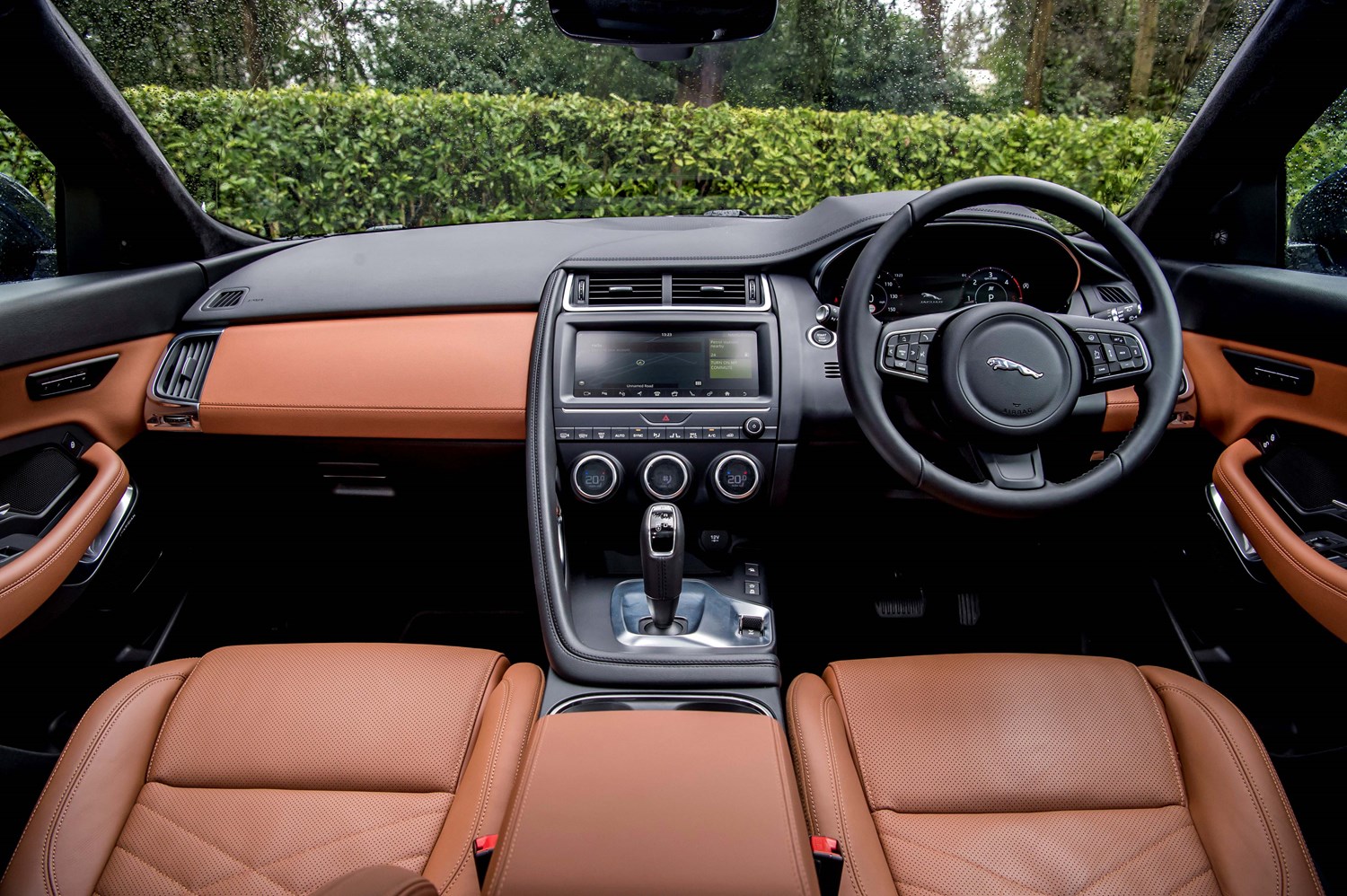Space and practicality
One area where the E-Pace really impresses, though, is on the spaciousness front. As a small SUV, you might not expect it to be especially roomy, but that’s far from the case and this is a very capable family car.
With the rear seats upright, the E-Pace’s 577-litre boot eclipses that of its rivals, though with the seats folded, the 1,234 litres isn’t the largest available – it’s beaten quite noticeably by the 1,550 litres in a BMW X1, which is worth considering if space is the more important.
The space in the cabin itself is also generous, with adults treated to plenty of room in the back, even if a panoramic glass roof is fitted too. There’s plenty of storage room as well, which adds to the E-Pace’s credibility as a family car, as does its five-star Euro NCAP safety rating.
Engines
While Jaguar is yet to introduce a hybrid derivative of its E-Pace, unlike rivals like the BMW X1 and Volvo XC40, there’s a great choice of petrol and diesel engines available.
Starting with diesel engines, there are three 2.0-litre units available. The entry-level option is the D150, which produces 148bhp. This engine is the only E-Pace you can choose with front-wheel-drive – all other models feature all-wheel-drive – and you have the option of a six-speed manual gearbox or nine-speed automatic transmission.
While the D150 is the most efficient E-Pace engine available, it’s worth upgrading to the D180 with 177bhp for the extra punch, and you also still have a manual or automatic gearbox option. At the top of the diesel range is the automatic D240, which produces 237bhp, can sprint to 60mph in a credible 6.6 seconds and reach a top speed of 139mph.
Moving over to the petrol side, all versions feature a 2.0-litre unit with all-wheel-drive. The choices include the 197bhp P200, 247bhp P250 and the 296bhp P300. Even the P200 delivers great performance – sprinting to 60mph in 7.5 seconds and reaching a top speed of 134bhp – but if you want the quickest E-Pace, the P300 is the one to go for. This can reach 60mph in 5.9 seconds and hit a top speed of 149mph.
Running costs
If you’re wanting to keep a watch on running costs, you should undoubtedly choose a diesel engine for the E-Pace. Though neither are especially efficient, the D150 is the one to go for with front-wheel-drive and a manual gearbox. It’ll return a claimed 42.7mpg, with CO2 emissions of 143g/km. The D240 returns similar fuel economy figures of 37.1mpg, but CO2 emissions are much higher at 175g/km.
If you do a lot of miles each year, the petrol options are worth avoiding, as even with the P200 engine, the E-Pace barely achieves a claimed 30mpg, with CO2 emissions of 182g/km.
It’s also worth looking out for an E-Pace that has or had a list price of less than £40,000 when new, as those exceeding that figure will pay an extra £310 in annual road tax for the five years after the first registration.





